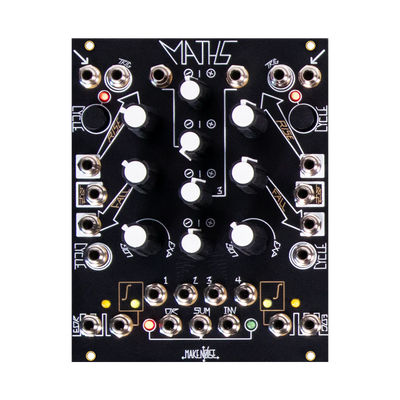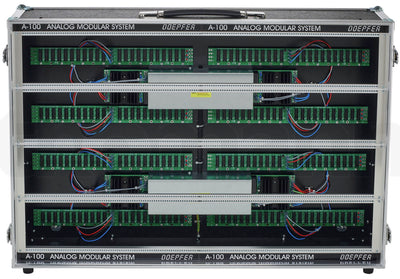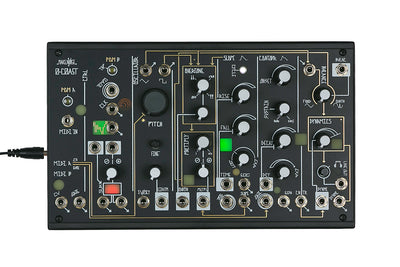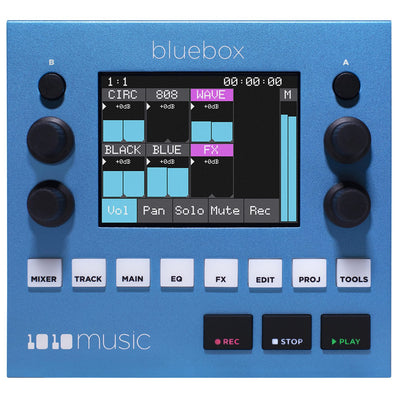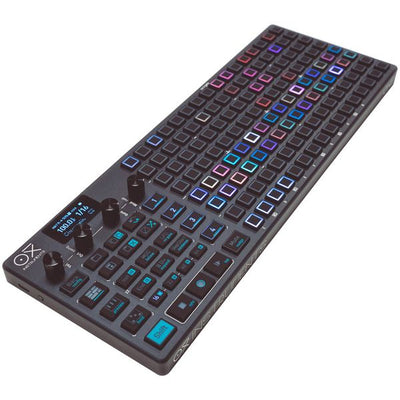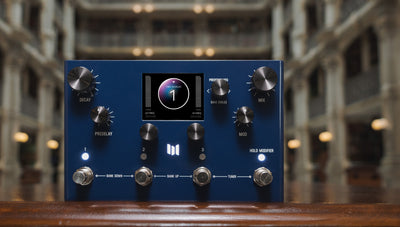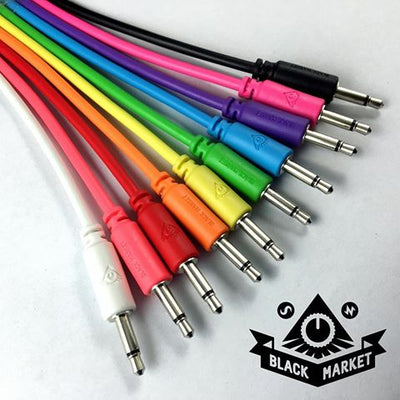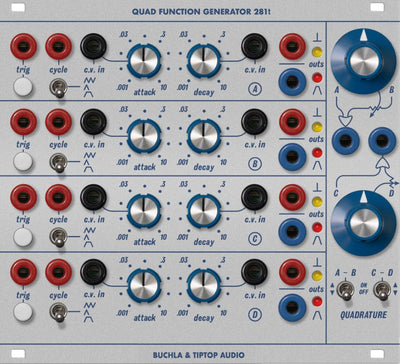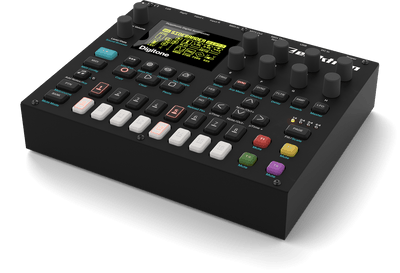MD900 is a polyphonic desktop synthesizer, multitimbral with 4 parts. A polyphony of up to 16 voices are shared by the 4 multi-timbral parts. All of these 4 parts have their own effect stack [Mod-Delay (flanger, chorus, vibrato), Reverb, Tube-AMP, EQ, LP-Filter, DYNAMIC (Limiter) , Stereo Delay ...].
The overall audio path is stereo. Rationally, the oscillator, mixer filter, amps and effects are all in stereo.
Four independent arpeggiator und step sequenzer assigned to each of the four synth parts. The trigger sequencer may trigger the built in transient sample player (Drum Kit .wav) or send triggers to MIDI-Out (USB-DIN or USB-MIDI)
The housing is made of aluminum with real walnut wood on the front and back.
All components are industrial grade. On the operator panel we use precision potentiometer with aluminum covered knobs.
For some parameter entries we use endless encoder without rest.
This kind of encoders feels like a potentiometer.
All of this feels very valuable and it feels great to work with.
The MD900 XVA engine is patch compatible with the M800-R2 synthesizer.
VOICE Structure:

The heart of the voice are the two aliasing free oscillators (OSC1,OSC2).
This oscillators have two different modes
(Wavetable- or Algorithm-oscillator)
Each of them can run in 4 instances with detuning capabilities and spread in the
stereo channels in a different way.
The Noise is a sample based oscillator
which can be restarted with the Note-On, run free with fix pitch or follow the Note-On pitch. All oscillator outputs are stereo. These stereo outputs will feed in the mixer section. The output of the mixer has two paths which are the input for both stereo multimode filters (A/B). Both filter outputs feed the amps (A/B) and final these stereo outputs feed the effect stack.
Mixer:

The Mixer primary sum the OSC1,OSC2 Noise outputs. It can be decided which path (A/B) should be mixed to.
Cross fade between OSC1 & OSC2 are just on path A. The cross fade amount is a modulation target.
Multimode Filter:

Both MULTIMODE FILTER emulate some classical analog filter types such as filters with 12dB or 24dB filter depth (LP,BP,HP,NS).
Some filter types start self-oscillating on high
resonance values. The actual cutoff frequency will be displayed by the cursor in real time. The graphical view displays the filter curve in context with the selected filter type, filter mode and their individual parameters.
Modulation Matrix:

The modulation matrix has 24 slots.On each slot a modulation Source and modulation
Destination can be defined. The amount
can be adjusted between 0-100% and the polarity can be reversed. 38 modulation destinations and 24 modulation sources are available.
Drum Instruments:

The Drum-Instruments are organized in 14 different instruments. On each of them the sample is selectable (stereo/mono sample .wav). The pitch, panorama, level, start/end points & fade out time is adjustable.
This collection of Instruments with their own settings are storable in a drum kit with a certain name. The dependent instrument is able to be triggered with midi over channel 10. The note number is selectable on each individual instrument. This is stored in the Kit File as well.
Another way is to trigger the instruments with the build in drum grid (drum machine).

Wavetable Oscillator:

The wavetables are stored in the file system and can be updated. Should one or more wavetables have less than 256 waveforms, they will automatically expand to 256 waveform variants. The wavetable oscillator runs up to 4 instances. Detune gives a nice wide warm sounding spectrum, that spread into the stereo outputs. The spread is adjustable as well. Spectral morph capabilities with different algorithms push the sonic results to new dimensions.
Algorithm Oscillator:

This oscillator is used to generate classic waveforms but more in a variable form.
Variable form means that the waveform depends on the primary algorithm and
up to 3 parameters which generate the waveform. As an example: "VA-Sweep" algorithm changes the resulting waveform from a saw - tri (P1: 0-25%), tri - sin
(P1: 25-50%), sin - pulse (P1: 50-75%) and changing the pulse width (P1: 75-100%). Other algorithms are implemented as well (Dual PWM, HardSync-Saw, PWM, Formant Sin, Phase-Distortion-SIN, Fract PWM). This oscillator can be used to produce sounds which are typical in the analog synthesizer world. With the modulation capabilities you are able to do even much more. The oscillator is bandlimited and does not generate aliasing artifacts.
Noise Sample Oscillator:

This sample based oscillator (stereo samples .wav) allows to play ambient or noisy samples followed by using the Note-ON pitch or fix pitch. The sample can be played endless, looped (start/end points) or retriggered on Note-ON. The output of this oscillator can be continously mixed between Filter A/B to give this output an independent envelope.
Effect Section:

The Effect Section exists for ever part (A,B,C,D) independently. The Effect Section can be stacked and assigned in order.
(DELAY, CHORUS-FLANGER, EQ, COMPRESSOR, REVERB ...)
Arpeggiator & Step Sequencer:

The build in arpeggiator mode has a range up to 64 steps. The ASSIGN window includes K1-K5 which represents the played key at the selected step in the pitch order or the pressed order. The arpeggiators melody can be changed in real time by pressing other keys. The MODE window includes the settings: “off, on, legato” and specifies if the note should play or hold. In addition, the arpeggiator is able to act as a step sequencer. Within the sequencer mode each tone at each step can be shifted in semitones or octaves. If a key on the keyboard is pressed the sequence is shifted in relation to the fundamental tone.
Clip Launcher

and more ...
Operation Panel:
The operation panel gives you real time control to the major voice parameters with a dedicated knob. All parameters are accessible via
touch-display and the endless rotary encoders. The part (timbre) has to be selected to alter the parameter on the dependent timbre.
The module specific info display gives the necessary detailed feedback on the parameter changes.

Configuration example:

With the build in midi device manager you are able to map those USB midi devices to a certain port (4 ports for MIDI Note & CC Events). In the midi settings you may choose that port for which Midi Note-Event or CC should be processed.
With the "midi learn" you may assign the most sound forming parameter to a certain midi device, channel and control.
The internal control bus allows the expansion for additional control modules.


